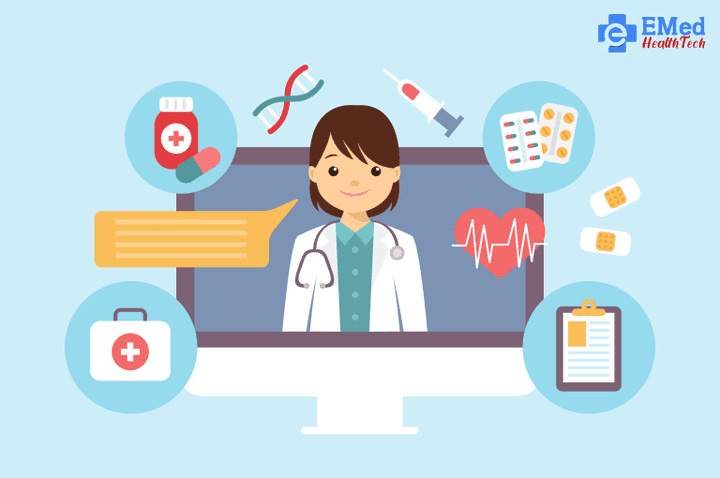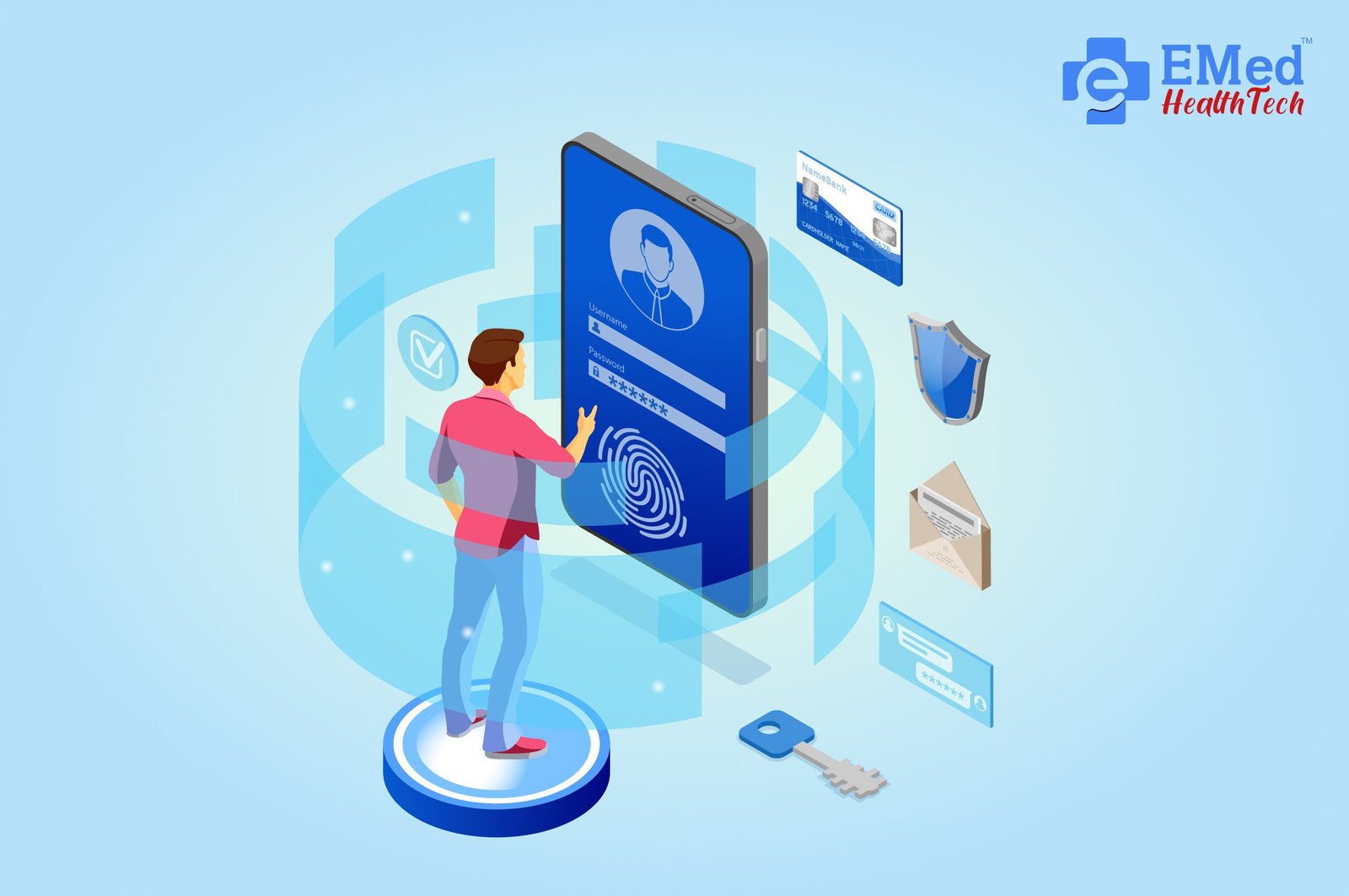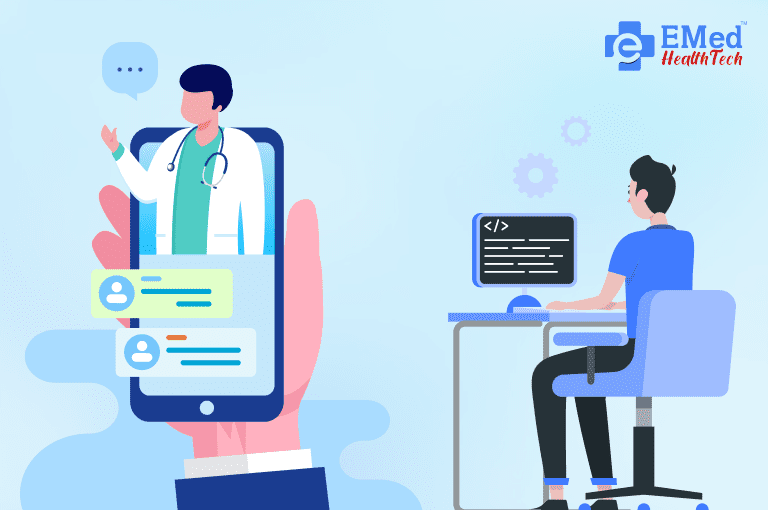The world of healthcare delivery is changing with the digital transformation. With the information age, where convenience and availability are paramount, the way people receive healthcare is evolving. Among the most dramatic changes has been the rapid emergence of telemedicine and telehealth platforms. As the worldwide healthcare system adopts the concept of remote care, the need for developing telemedicine apps is at its peak.
Suppose you are a healthcare provider, entrepreneur, or clinic owner who is planning to digitise your services. In that case, this guide provides a comprehensive blueprint on steps to build a telemedicine application successfully.
What is Telehealth and Telemedicine?
Understanding the core concepts is crucial before jumping into development.
Telehealth is a much wider term that includes all the remote healthcare providers, both clinical and non-clinical.
Unlike telemedicine, which is specifically for clinical services, like virtual dentist visits, remote diagnosis, and treatment planning through digital means.
Telemedicine application development & telehealth app development play a significant role here, as both heavily depend on mobile and web platforms to bridge the gap between patients and providers in real-time.
Why Build a Telemedicine Application?
Telehealth popularity is not a fad, it is a permanent healthcare access solution. And this is why healthcare providers are looking into telemedicine app development:
 1. Improved Access to Care
1. Improved Access to Care
Telemedicine removes geographical limitations, enabling patients in rural or underserved regions to connect with qualified healthcare providers. This is especially true in rural areas, in which speciality services may be limited.
2. Reduced Healthcare Costs
Telehealth can help reduce costs for providers and patients alike by minimising hospital visits and enabling preventive care. Facilities reduce infrastructure costs, and patients cut down on travel and waiting times.
3. Enhanced Patient Engagement
A doctor app or patient app ensures a participatory, personalised and consistent healthcare ecosystem. Notifications, follow-up scheduling, and educational material improve the overall patient experience.
4. Convenience and Time-Saving
Booking online appointments, accessing medical records, and consulting specialists—all from the comfort of home—adds tremendous value, especially for elderly patients and people with mobility issues.
5. Scalability for Healthcare Providers
A digital platform enables hospitals, clinics, and independent practitioners to scale operations and reach more patients without increasing physical space or staff.
Key Features of a Telemedicine Application
When considering telehealth app development, the right features can make or break your platform. Here’s a breakdown:

For Patients:
- User Registration and Profiles
- Appointment Scheduling (with calendar sync and time zone detection)
- Video and Audio Consultation
- E-prescriptions and Online Payments
- Access to Medical History and Reports
- Push Notifications and Reminders
- Symptom Checkers or Chatbots for basic support

For Doctors:
- Doctor Dashboard with appointment and patient management
- Availability, scheduling, and calendar integration
- Access to EHR and Medical History
- Prescription Tools with Drug Database
- Secure Messaging with Patients
- Billing and Invoicing
- Integration with Lab and Pharmacy Services

For Admins:
- User Management Panel
- Analytics & Reports Dashboard
- Payment Gateway Integration
- Role-Based Access Control
- Data Security & HIPAA/GDPR Compliance Tools
The goal of any successful telemedicine application is to ensure a seamless experience for both patients and providers while complying with data privacy regulations.
Step-by-Step Process for Telemedicine App Development
Building a robust, scalable, and compliant app requires the right planning and execution. Let’s go through each step:

1. Market Research and Compliance Planning
Start by identifying your target audience—whether you’re serving general healthcare needs or a specific niche like dermatology or mental health.
Also, compliance is key. Your telemedicine app must adhere to:
- HIPAA (US)
- GDPR (EU)
- PIPEDA (Canada)
- ISO 27001 (International)
Incorporating legal compliance from the beginning saves time and protects user data.
2. Choose the Right Development Partner
Look for a trusted telemedicine application development & telehealth app development company like EMed HealthTech that offers domain expertise and a proven track record. A reliable partner will help you build a secure, scalable, and cost-effective app.
3. Define Your Tech Stack
Depending on the platform (iOS, Android, Web), your tech stack may include:
- Front-end: React Native, Flutter
- Back-end: Node.js, Python (Django/Flask)
- Database: MongoDB, PostgreSQL
- Cloud: AWS, Azure
- Video Conferencing APIs: Twilio, Agora, WebRTC
Choosing the right tech stack affects the app’s performance, scalability, and future updates.
4. UI/UX Design
The design should prioritise accessibility, speed, and ease of use. Ensure that both patients and doctors can navigate the platform intuitively. Use minimalistic design, clear typography, and logical flows.
5. Development and Integration
Now, it’s time to develop core modules including:
- User Authentication
- Calendar Scheduling
- Real-Time Video Consultation
- Messaging System
- EHR System Integration
- Payment Gateway Integration
- Push Notifications
This phase should also cover third-party API integration, such as pharmacy, lab services, and insurance.
6. Testing & QA
Rigorous testing ensures app reliability. Include:
- Unit Testing
- Load Testing
- Security Testing (Pen Testing, Encryption)
- Usability Testing
- Compatibility Testing across devices
Bug-free performance builds trust and long-term usage.
7. Deployment and Maintenance
Once the app is live on app stores and the web, ensure ongoing maintenance, security updates, and feature improvements. Monitor analytics to identify user behaviour and improve app flow over time.
Telemedicine App Monetisation Models
Here are some common ways to monetise your telehealth app:
1. Subscription Model
Patients or doctors pay a monthly/annual fee to access premium features.
2. Pay-per-Consultation
A commission is charged on every completed consultation or booking. This is ideal for clinics or hospitals offering freelance consultations.
3. Freemium Model
Basic access is free, but users pay for advanced features or services such as health records storage or advanced analytics.
4. Third-Party Partnerships
Earn from pharmacy tie-ins, lab integrations, or advertising partnerships with health-related services or diagnostics.
Challenges in Telemedicine App Development
Even the best ideas come with challenges. Here are some to watch out for:

1. Data Privacy and Compliance
Healthcare apps handle sensitive patient data. Security and encryption are non-negotiable. Ensure proper authentication, audit logs, and end-to-end encryption.
2. Real-Time Video Quality
Ensure the video consultation is stable and clear, especially in low-bandwidth regions. Adaptive streaming and latency management are critical.
3. User Onboarding and Training
Many patients and doctors may be unfamiliar with digital platforms. Provide video tutorials, tooltips, and in-app guidance.
4. Integration with Existing Hospital Systems
Ensure the app integrates seamlessly with your existing hospital app, EHR system, or legacy infrastructure.
5. Scalability and Performance
Your app should be able to handle spikes in usage without compromising speed. Load balancing and scalable infrastructure are essential.
Future Trends in Telehealth and Telemedicine App Development
Telemedicine is evolving rapidly. Keep an eye on these trends:

1. AI-Powered Diagnostics and Chatbots
Use AI to assist doctors with diagnostics, based on symptoms and history. AI chatbots can help with triage and general inquiries.
2. Wearable Integration and Iot Devices
Apps are now syncing with wearables for real-time patient monitoring, helping with chronic disease management.
3. Voice Assistant Integration
Virtual assistants like Alexa and Google Assistant are helping with appointment scheduling and medication reminders.
4. Blockchain for Health Records
Blockchain ensures secure and tamper-proof medical records, especially important for multi-clinic or multinational networks.
5. Remote Patient Monitoring (RPM)
As telemedicine matures, RPM tools integrated within apps will offer real-time insights into patient vitals and conditions.
Why Choose EMed HealthTech for Telemedicine App Development?
EMed HealthTech is a leading name in telehealth app development, known for delivering secure, customizable, and scalable healthcare technology solutions.
With over a decade of industry experience, EMed HealthTech has helped clinics, hospitals, and startups bring their digital healthcare ideas to life. From building intuitive doctor apps to advanced telemedicine applications, we offer full-cycle development and support.
We also offer white-label solutions, helping you launch faster with reduced time-to-market.
Conclusion
The digital healthcare revolution is here, and now is the perfect time to act. A well-designed telehealth app can redefine patient care, improve operational efficiency, and create new revenue opportunities for your clinic or hospital.
With growing patient expectations and industry competition, it’s essential to choose the right telemedicine application development & telehealth app development strategy and partner.
Ready to Build Your Telemedicine Application?
Partner with EMed HealthTech, the trusted name in telemedicine and telehealth app development. From ideation to deployment, we provide end-to-end solutions tailored to your healthcare business needs.
Contact us today to get started on your journey to smarter, digital healthcare delivery.







 1. User-Friendly Interface
1. User-Friendly Interface




















